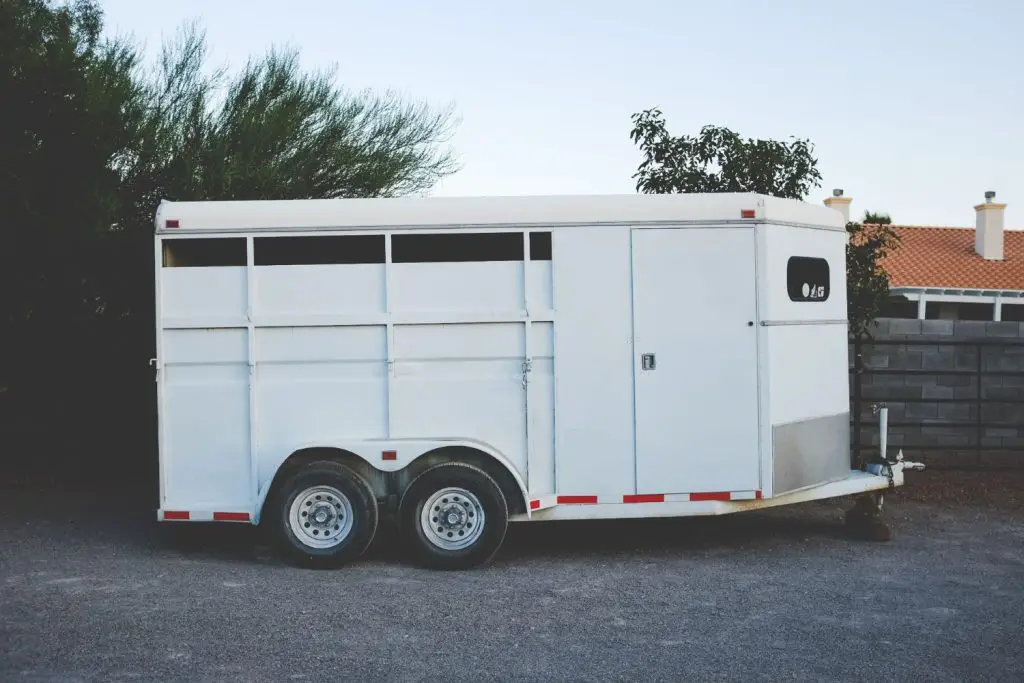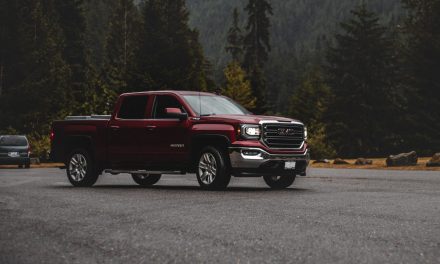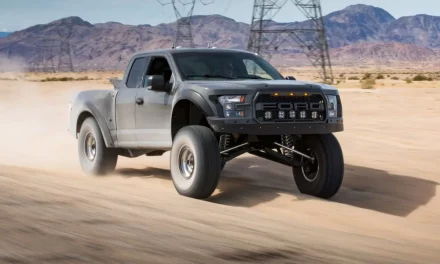For whatever reason, you have spare truck tires lying around somewhere. You don’t have a truck to put them on, but you do have a trailer. So can you put tires meant for trucks on trailers?
Truck tires cannot be used on trailers safely. There are tires specially designed for trucks and trailers, and you cannot swap them. If you do, you risk blowing out your tires and getting into a nasty accident — not to mention waste valuable fuel.
This article will elaborate on why using truck tires on a trailer is a bad idea.
Light Truck (LT) vs Special Tires (ST): Differences Explained
LT is short for Light Truck tire, which you find on pick-ups, vans, and SUVs. ST is short for Special Tires, which trailers typically use. Here are the features that set LT and ST tires apart.
1. Sidewall Construction
LT tires have thinner and more flexible sidewalls than ST tires as manufacturers develop them to provide comfortable rides and performance. When turning at speed, the sidewalls deform to deliver grip and keep the vehicle on the road.
Trailers, on the other hand, usually don’t have passengers, so there’s no need to put comfortable tires on them. They don’t need optimum grip mid-corner either. The only performance metric that matters as far as trailer tires are concerned is the ability to hold weight.
For that reason, ST tires have stiff sidewalls with little to no flex. The thick sidewalls allow ST tires to hold weight than LT tires. Furthermore, the rigid walls prevent the trailer from swaying, increasing stability during towing.
2. Speed Rating
A tire’s speed rating shows the maximum speed the tire should go. Beyond that speed, the tire won’t perform as designed and will likely fail.
Depending on the vehicle’s manufacturer, you can find the tire speed rating on one of the vehicle’s door jambs, the gas tank hatch, the glove box door, or the owner’s manual. Tire manufacturers also incorporate the speed rating on the tire sidewall.
The letter(s) at the end of the tire’s service description indicate the tire speed rating. An example of a description is 201/50R14 91G. The G is the tire speed rating, indicating that the maximum speed of that tire is 56 mph (90 kph). Tire speed ratings range from A1 [3 mph (5 kph)] to ZR [over 186 mph (300 kph).
ST tires can usually go no further than 65 mph (104 kph). The people you see towing at over 75 mph (120.7 kph) are likely pushing their ST tires harder than they are supposed to. That said, some ST tires have higher speed ratings, allowing you to drive beyond 65 mph (104 kph).
LT tires have higher speed ratings than ST tires. Therefore, when using LT tires without a trailer, you can safely go beyond 65 mph (104 kph). However, while towing a trailer, you should stay within the speed limits of the ST tires.
3. Load-Bearing Capacity
The load index written on the tire indicates its load-carrying capacity. The load index is the number right before the tire speed rating. Using the example above [201/50R14 91G], the load index is 91. The higher the index, the higher the tire’s load-bearing capabilities.
Tires are designed to hold certain loads at specific pressures. ST tires have higher load-bearing capacities than LT tires since they have to prop up heavier weights.
Note: Overinflation or underinflation of their tire affects its load-bearing capabilities. For optimum performance, you should inflate the tire to the correct pressure.
4. Tread Construction
LT tire treads are designed to provide traction on various road surfaces. The tires should go on the steering and drive axles of vehicles.
Trailer axles don’t steer or provide drive. All they do is roll the tire according to the vehicle’s speed. Therefore, the tread on ST wheels is designed to provide as little rolling resistance as possible. The tread should facilitate easier towing and better fuel consumption.
Due to their thinner tread and the stress they undergo when hauling heavy loads, ST tires deteriorate faster than LT tires.
- WHEEL VS TIRE: WHAT IS THE DIFFERENCE BETWEEN THE TWO?
- ONCE A MONTH: HOW OFTEN SHOULD YOU AIR UP YOUR CAR’S TIRES?
- TOP 2 REASONS YOU SHOULD HAVE ALL FOUR TIRES BE THE SAME BRAND
Drawbacks of Using Truck Tires on Trailers

Considering the differences between LT and ST tires, it’s a bad idea to swap them. If you’re still considering LT tires for your trailer, these drawbacks may make you think twice.
1. Increased Likelihood of a Blowout
Since ST tires are designed to support heavier weights than LT tires, you’ll likely overload the latter by installing them on a trailer.
Even if you find LT tires with the appropriate load index for the trailer’s weight, you still have to ensure there’s sufficient clearance around the tire. Clearance issues might force you to change the wheel, which will likely cost more than ST tires.
If you use overloaded LT tires to haul a trailer, the generated heat will wear them out faster. The flex on the sidewall under the load will also increase the tire wear.
Even if the tire seems fine on the outside, it’s possible it may have sustained some internal damage. When the internal wear reaches critical levels, it’s likely the tire will blow out without warning. A blowout on a busy highway can cause a nasty accident.
2. Compromised Drivability and Fuel Economy
Since LT tires are designed to flex, they’ll cause your trailer to sway. A swaying trailer will affect the way you drive your vehicle and increase the likelihood of an accident. Furthermore, the higher rolling resistance of ST tires makes towing more difficult and increases fuel consumption, since your vehicle has to work harder to move against the greater friction.
Conclusion
ST and LT tires work best when installed in their specific vehicles: LT tires on trucks and ST tires on trailers. If you use LT tires on a trailer, the drawbacks far outweigh the benefits.
You can use a knife to chop wood, but an ax will definitely work better. Similarly, you can install LT tires on a trailer in theory (albeit with considerable risk to yourself and others), but ST tires will work better for longer.





